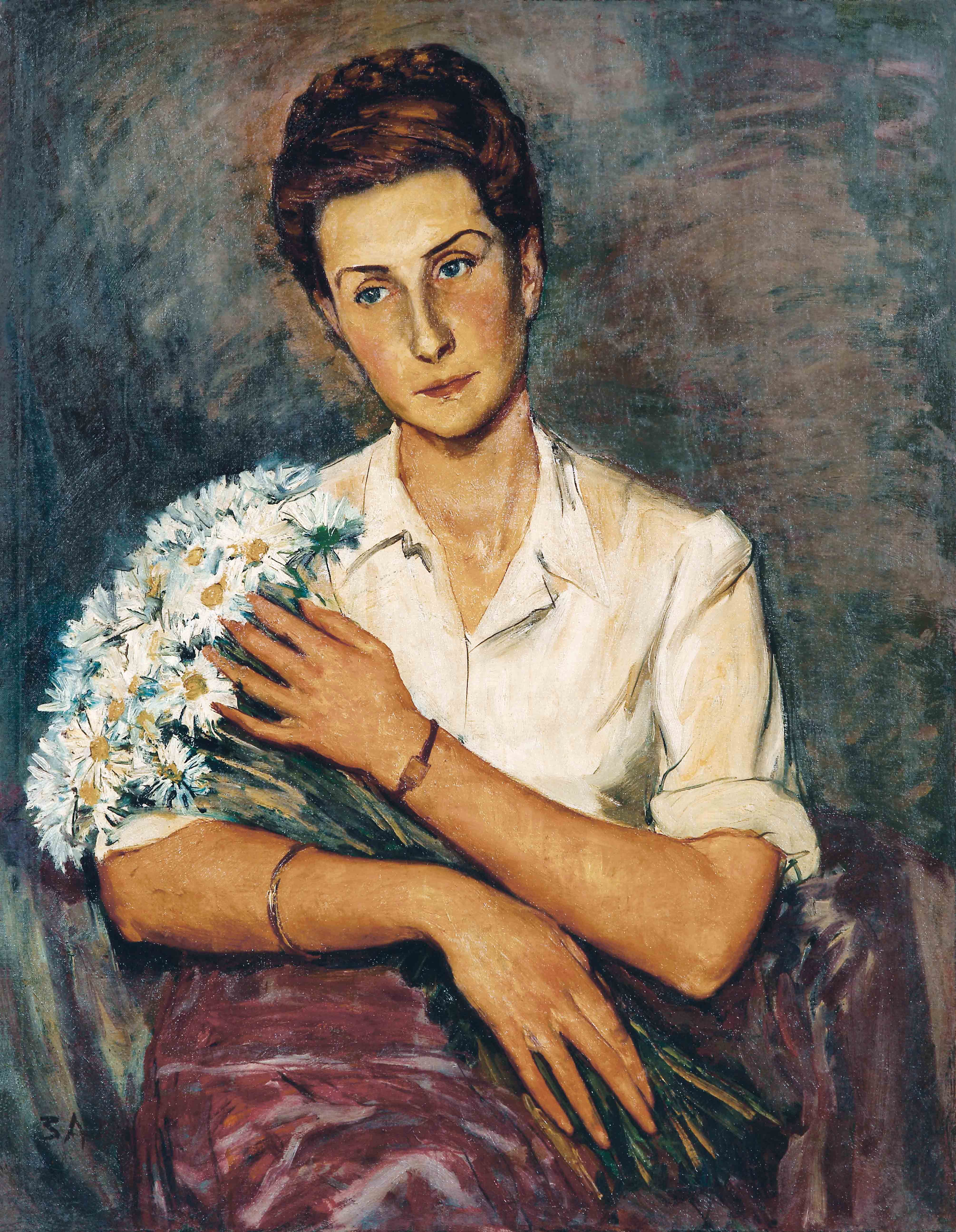
Sha Qi
Portrait of a Belgian Classmate
1930
Oil on canvas
Sha Qi is a legendary painter in the history of Chinese modern art, and is known as “the Van Gogh of China”. In his earlier years, he studied at the royal art academy in Belgium, under an acclaimed Belgian painter and the principal of the academy, Alfred Theodore Joseph Bastien, who has also taught Wu Zuoren a few years earlier. Sha Qi’s works fully embody the stylistic essence of Courbet and other European realist masters that Bastien recommended to him, while his use of the brush and colors reveal traces of impressionism. Looking at the spirit of the individual, Sha Qi is a passionate painter. the European modernist wave at the time has had subtle influence on him.
In 1946, having studied and lived for a decade in Belgium, Sha Qi returned to China, yet due to his family situation and dementia, he remained unknown and lived in seclusion. He did not participate in any artistic groups, the exploration of modernist trends and related political waves, and had been forgotten by the art world for a long time. Yet, his outstanding artistic talent and solid foundation germinated with his temperament and his relatively simple living environment that easily entered the modernist exploration, whose lasting individual practice revealed his independence and diversity through his artworks. His sketches from the 1980s are straightforward, lush in color, and his later works are often done quickly with painterly traces, the simplification of colors, rich and abstract, marking a stylistic change in comparison to the earlier works, while one finds apparent clues of modernist paintings, while being conceptually original.
Overall, it can be said that Sha Qi is a unique artist who have subjectively (mental illness) distanced himself from the artistic movements and waves of his time, his profile has fully preserved the early practitioners who have studied Western art in Europe in the 1920s and 1930s, and their understanding on western realism, modernism and the individual developments thereof. Artistic practice beyond his mental illness, the relationship between various artistic ontologies, are the classical topics in the history of art that has unquestionably provided a lot more possibilities in the discussion of Sha Qi’s artworks. At the same time, he is also one of the artists who has been “rediscovered” and recognized since the 1980s, who has important significance in the study of the history of Chinese oil painting.
The work shown in this exhibition, Portrait of a Belgian Classmate was painted I the 1930s, a representative work of the period when Sha Qi studied in Belgium, and it had been shown in his solo exhibition at the Petite Galerie in Brussels. After Sha Qi’s return to China, his life was unstable, and many works he had brought back from Belgium were lost, and this painting is one of the surviving pieces of the series under this title. The work is a portrait depicting an elegant young female, her head slightly slanted, eyes calm while starting to the front, arms softly holds a bouquet of dandelions. The overall artwork is concise in composition, and the contour of the figure is distinct, its sketching is lucid, that best represents the artist’s learning of the Western realist training. His execution on the background and brushstrokes seems to remind people of techniques of impressionism. Because the work has adopted the pyramid structure, the surface is stable and balanced, that shows a solemn yet gentle and lyrical.
(Edited by Su Wenxiang, Xu Chongbao, Huang Si, 2015)

